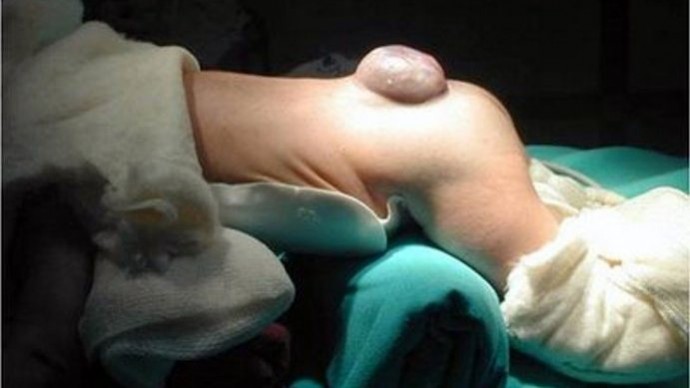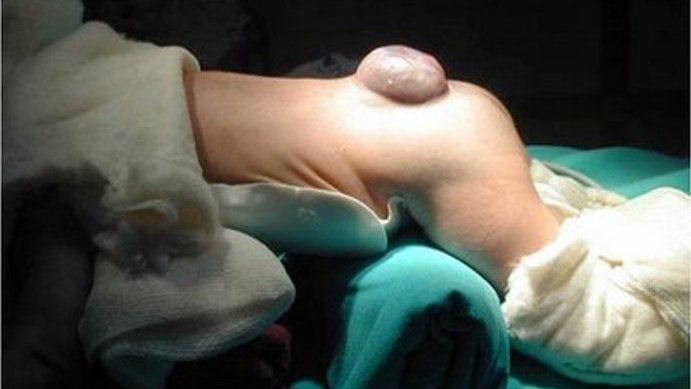
(MintPress)—A lawsuit filed against Monsanto, Philip Morris and Carolina Leaf Tobacco alleges the U.S. companies’ drive for profits led to the widespread use of toxic pesticides in Argentina’s tobacco farms, resulting in a rise of birth defects among children living in the tobacco-rich region of Misiones.
Argentinian farmers who grow tobacco plants for the American tobacco giants were encouraged to use Monsanto’s Roundup chemical in high doses to enhance crop production, but were not given proper protective equipment or information highlighting potential side effects, according to the complaint filed by farmers and their families in Delaware, Monsanto’s headquarter community.
In a 55-page document submitted to the court, the farmers show an alleged correlation between the use of Monsanto’s chemicals and increased rates of cerebral palsy, epilepsy, spina bifida, congenital heart defects, down syndrome, missing fingers and blindness.
Studies link Roundup with birth defects
A 2010 report released by Earth Open Source found malformations in frog and chicken embryos when exposed to lower doses of Roundup, the same chemical used on Argentinian tobacco crops. The product is also used in domestic gardening and farming in the U.S. The study showed malformations manifested in developing brains, cranial structures and spinal cords.
The study was led by Dr. Andres Carrasco, an Argentinian who observed a correlation between the widespread use of Roundup’s active chemical glyphosate and birth defects in children who live in areas that grow Monsanto’s ‘Roundup Ready Soy,’ where the herbicide is applied through aerial spraying.
The genetically modified, super soy seed is created to tolerate high levels of the herbicide. While Roundup is known to kill weeds and unwanted pests, the super seed is able to tolerate the herbicide, while absorbing the chemical and passing it on to the consumer.
Monsanto has been vocal in its assertion that its products and crops are safe, saying that studies which show damage in animal cells do not give a mirror image of how chemicals impact humans. They argue that products are created to rid crops of pests, while creating a strain of crop resistant to the chemical itself. Humans, they say, are also resistant to the negative impacts of the chemical.
A study conducted by the American Chemical Society in 2008 found that glyphosate,while dangerous in itself, was enhanced when paired with other chemicals found in Roundup. The combination was deadly for human cells, according to the study, which tested combinations of the chemicals on embryonic kidney and placental cell lines. The study concludes additive Roundup chemicals “change human cell permeability and amplify toxicity induced already by (glyphosate).”
Widespread use of Roundup in commercial agricultural farming has been practiced for more than 10 years in the U.S. According to the Environmental Protection Agency (EPA), 100 million pounds of the chemical are applied to U.S. farms annually.
Not the first fight for Monsanto
Despite Monsanto’s deep pockets, the company doesn’t always win legal battles.
In 1986, Monsanto lost a $108 million lawsuit to the family of a former Texas chemical processor who died at the age 53 to leukemia. The survivors of Wilbur Jack Skeen filed the lawsuit after the company refused to provide workman’s compensation to Skeen’s family following his death.
The survivors claimed Skeen was exposed to dangerous levels of benzene on the job — a carcinogenic chemical. Skeen’s predecessor had also developed leukemia after working at the company.
In February, a settlement was reached in a lawsuit filed against the company on behalf of a West Virginia community where the herbicide 2,4-D, used in Agent Orange, was produced from the 1950s to 1970s.
National Public Radio reported the settlement came with a gag order for the plaintiffs. While the resolution isn’t public, community members initially filed the lawsuit to seek medical monitoring awards for residents who lived in a town polluted with heavy levels of toxins, including dioxin.
A grain farmer in France won a high-profile lawsuit against Monsanto in February, representing the country’s first legal victory over the company. The court found Monsanto guilty of poisoning the farmer, who had been exposed to the company’s Lasso herbicide.
The lawsuit began in 2011 when Paul Francois, 47, said Monsanto did not provide sufficient information about the chemical’s harmful effects. Francois was exposed to the chemical in 2004 — it was banned from the country three years later. The farmer claims he suffered from neurological illnesses, including memory loss and stammering.
Monsanto representatives said, at the time of the ruling, that an appeal could be made.
“Monsanto always considered that there were not sufficient elements to establish a causal relationship between Paul Francois’s symptoms and a potential poisoning,” the company’s lawyer, Jean-Philippe Delsart, said in a statement.
Monsanto’s role in US politics
In 2009, President Barack Obama appointed former Monsanto Vice President Michael Taylor as senior advisor for the Federal Drug Administration (FDA).
Since then, the FDA has ruled on the side of Monsanto and against ‘GMO-Free’ labeling of foods.
This year, there has been a movement among states seeking GMO labeling on food produced by Monsanto. Vermont was on its way this month to passing legislation that would require labeling on all food. It passed the House Agriculture Committee with a 5-4 majority, providing solid ground for the bill to move forward. However, the bill has been put on hold by the Legislature to allow for public hearings regarding the matter. Monsanto is also cited as saying it would potentially sue the state if action was taken.
California is pushing forward with initiatives that call for GMO labeling. The grassroots group It’s Our Right To Know is pushing for a California Ballot Initiative that would allow the questions to go to the voters on November ballots.
In March, the entire country joined in on the fight for GMO labeling, submitting a petition with the FDA. In response, the FDA said it had made no decision and required more time to evaluate the situation.


